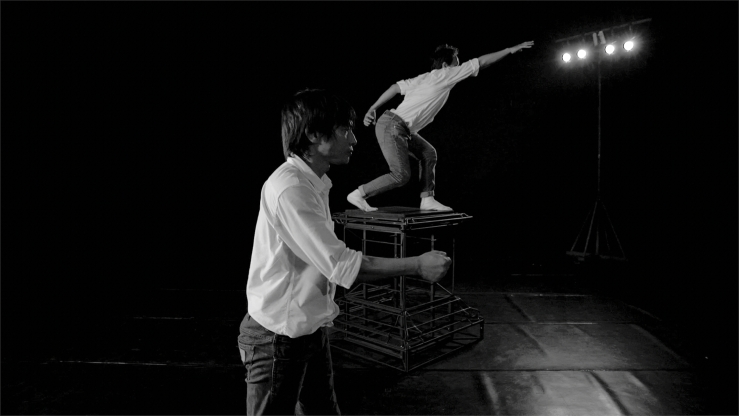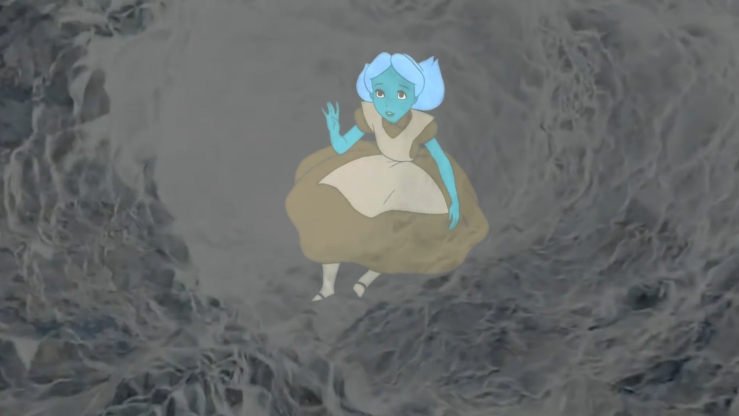Perspective #8: Object and narration
A perspective on the exhibition of VIDEONALE.19
In the works selected for this perspective on the exhibition of VIDEONALE.19, I was particularly interested in the way their narratives start from an object. How can objects, instead of persons or specific themes, provide stimuli for narrations, and what new perspectives emerge for both the narration in the video itself but also on the general question of: Who speaks and who is heard?
In Die Hörposaune (The Hearing Trombone) by Antonia Baehr, Jule Flierl and Isabell Spengler, pop-up books with three-dimensional models of the inside of the body and of plants become scores whose shapes, edges, transitions, and openings the interpreters slowly grasp with the tips of their fingers and transform into noises, sounds, melodies, rhythms, bodily notations. The result is an entirely new form of communication during which invisible interior events become audible and tangible in a novel way.
In the piece Ghost Light by Timoteus Anggawan Kusno, it is the statue of a crow, the metal outline of a platform, a variety of lampions, and the so-called ghost light to which two performers repeatedly react in different ways with their movements, facial expressions and gestures. This encounter with the objects and their stories gives rise to an entirely unique and poetic form of narration that deals with different states of transition.
In Stéphanie Lagarde’s Minimal Sway While Starting My Way Up, an elevator takes us on a journey through the vertical layers of power and global, economic structures of dependency. We sway between a mine 120 meters below ground level and the vertiginous heights of international real estate investments. The dynamics of a system geared towards unreserved profit becomes almost eerily vivid in the distorted voices from the elevator feed.
The so-called ›Picós‹, Afro-Colombian sound systems, are the central objects of the filmic narration in EKOBIO by Elkin Calderón Guevara & Diego Piñeros García. The actresses and actors enter into an identity-forming dialog with the ›Picós‹ that possess great (music) cultural relevance for the African diaspora in Colombia. During the course of the film, they become amplifiers of these self-assertive voices liberating themselves from the colonial heritage.
Tasja Langenbach
If you want to experience this perspective, please have a look at the following works, in no particular order:
Timoteus Anggawan Kusno | Ghost Light
Antonia Baehr, Jule Flierl and Isabell Spengler | Die Hörposaune, filmed in a visual installation by Nadia Lauro
Stéphanie Lagarde | Minimal Sway While Starting My Way Up
Elkin Calderón Guevara & Diego Piñeros García | EKOBIO
*This perspective was curated for the VIDEONALE.19 exhibition at the Kunstmuseum Bonn. As not all works selected for this perspective may be shown in the online archive, the programme can unfortunately only be viewed incompletely.
About the person
Tasja Langenbach is an independent curator with a focus on media art and moving images and artistic director of Videonale. She participates in selection, award and scholarship juries and is a member of the board of trustees of imai - inter media art institute. She teaches Culture, Aesthetics, Media at HSD Düsseldorf.




